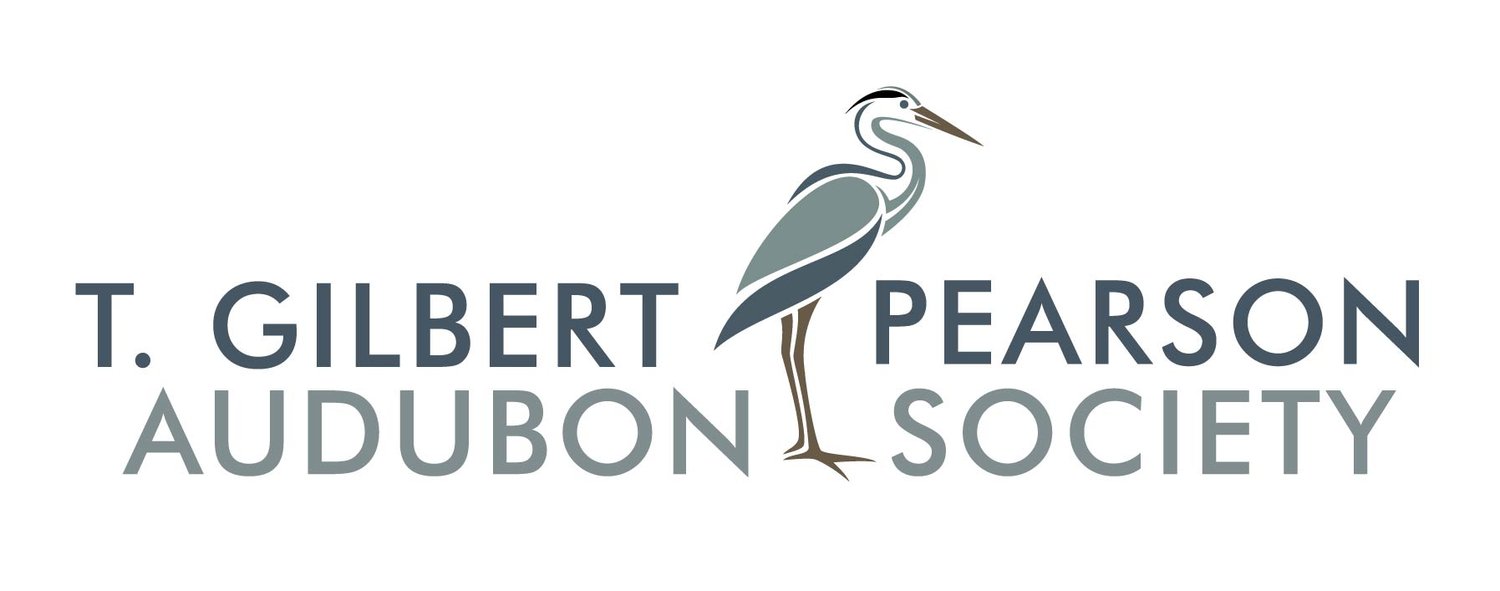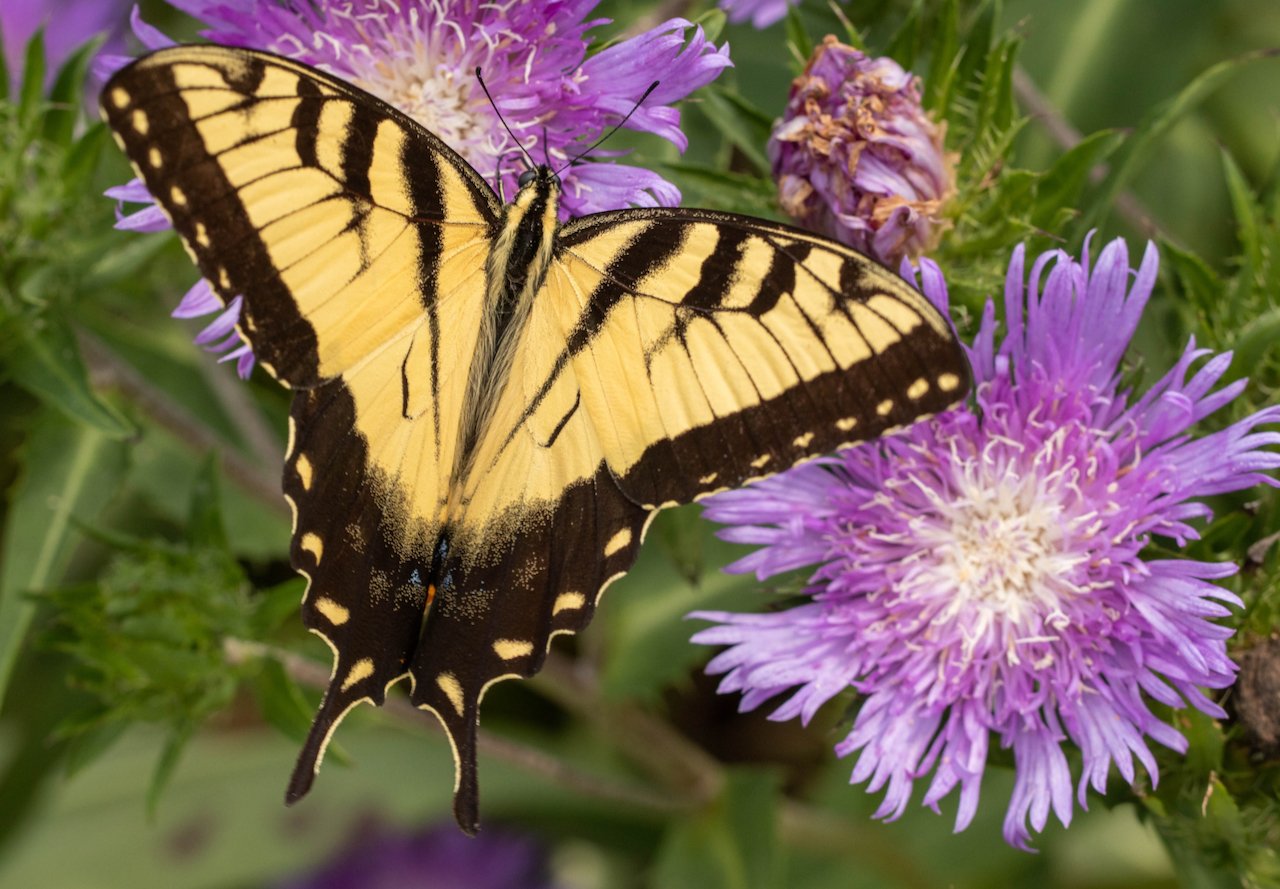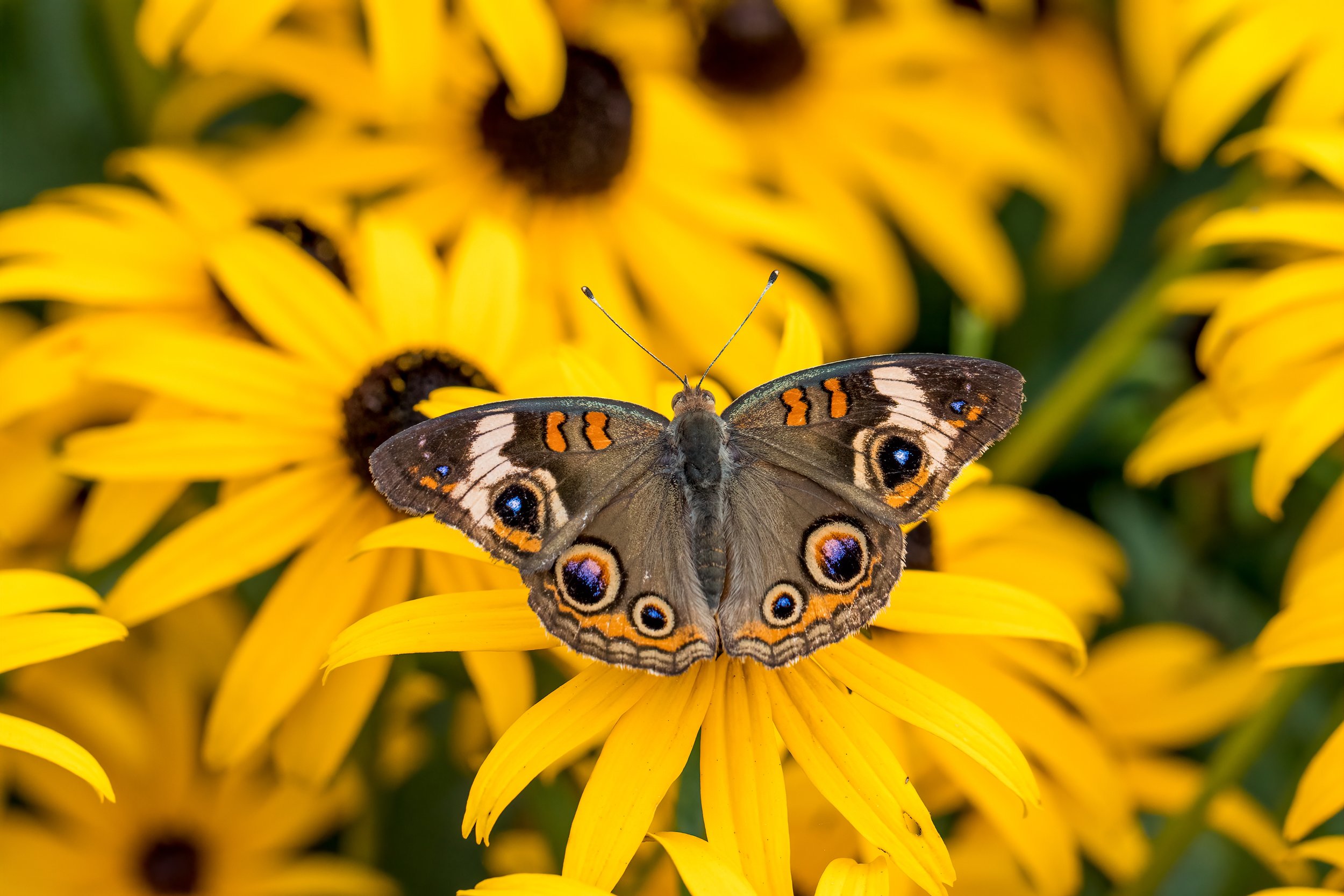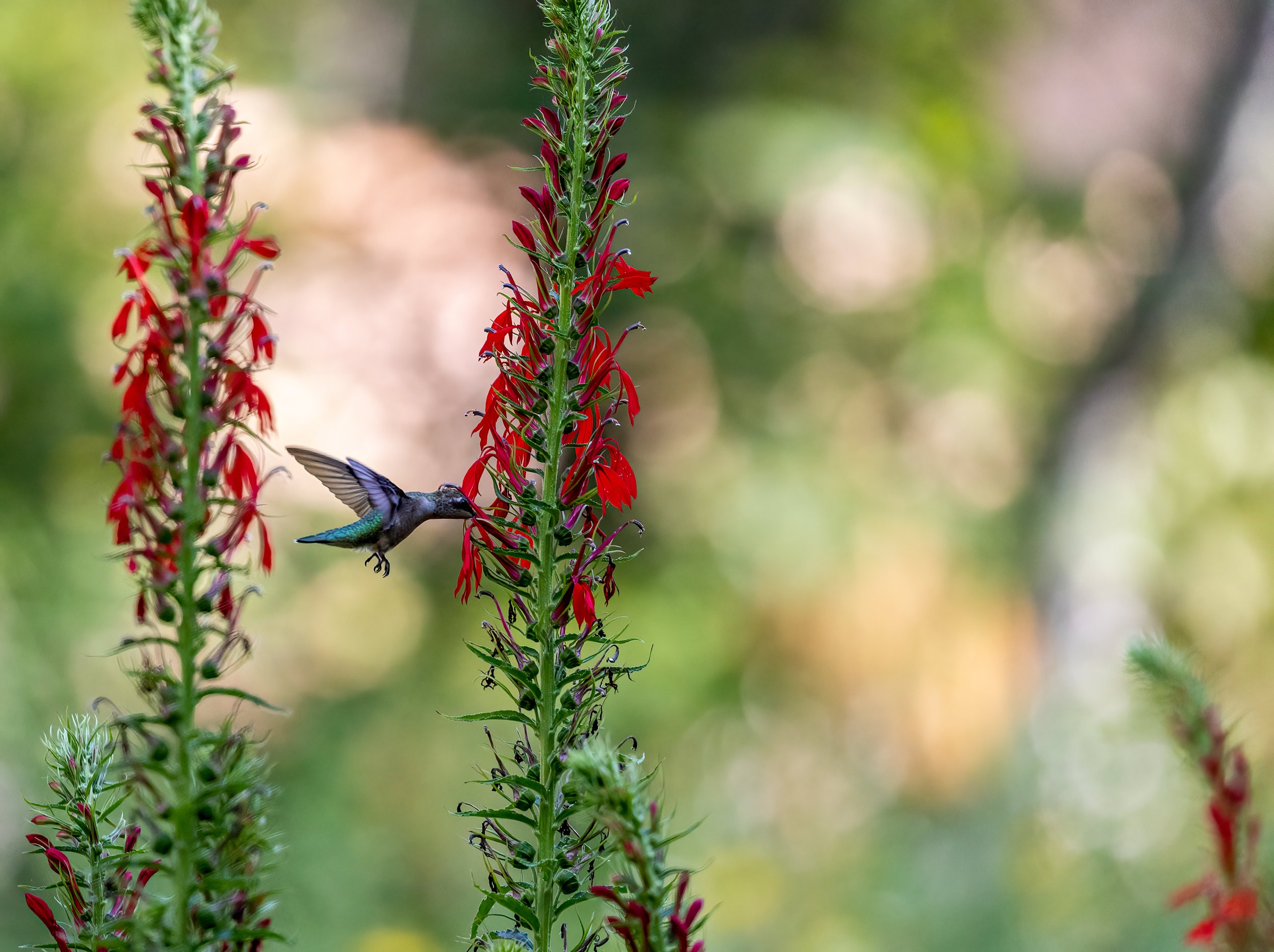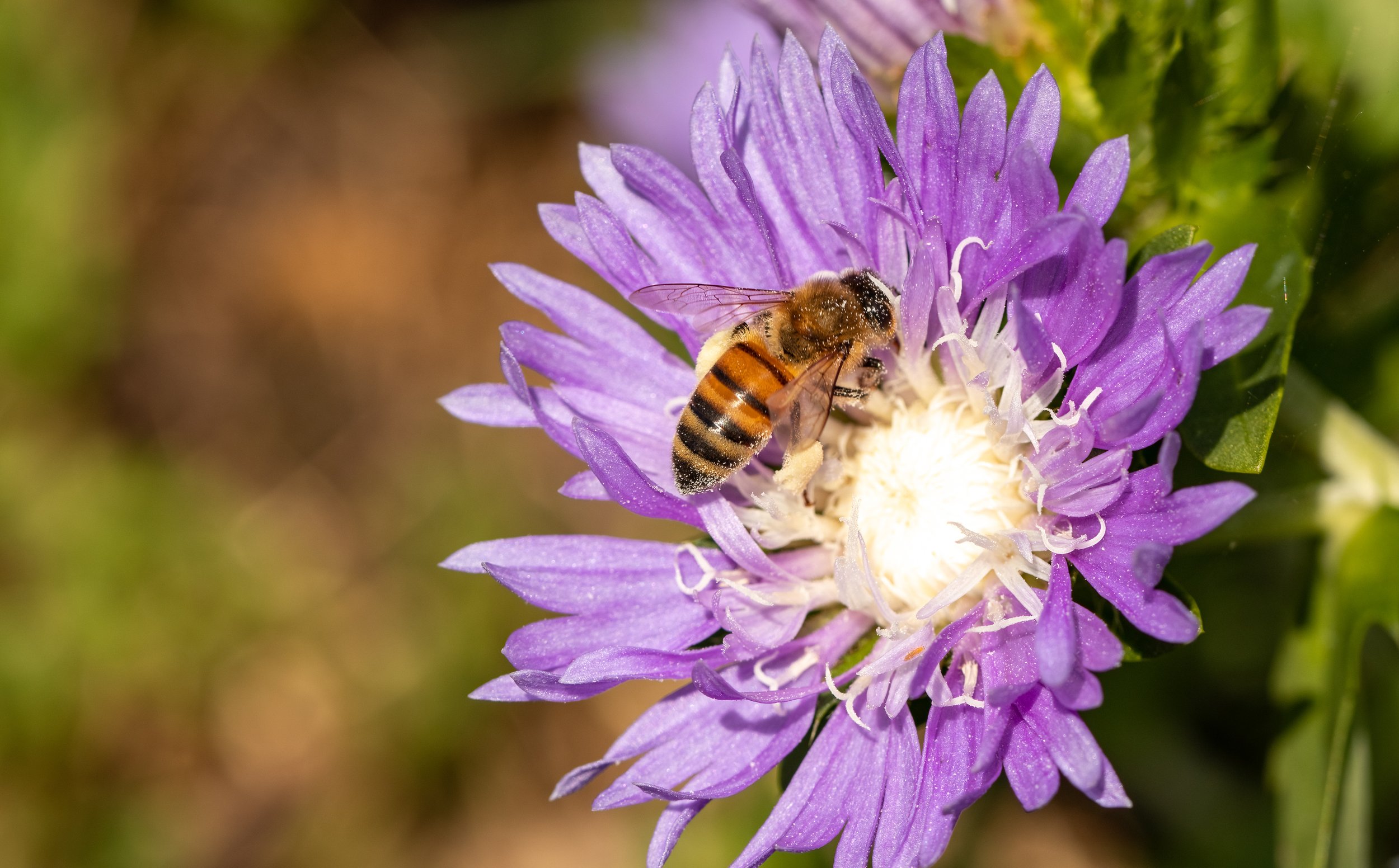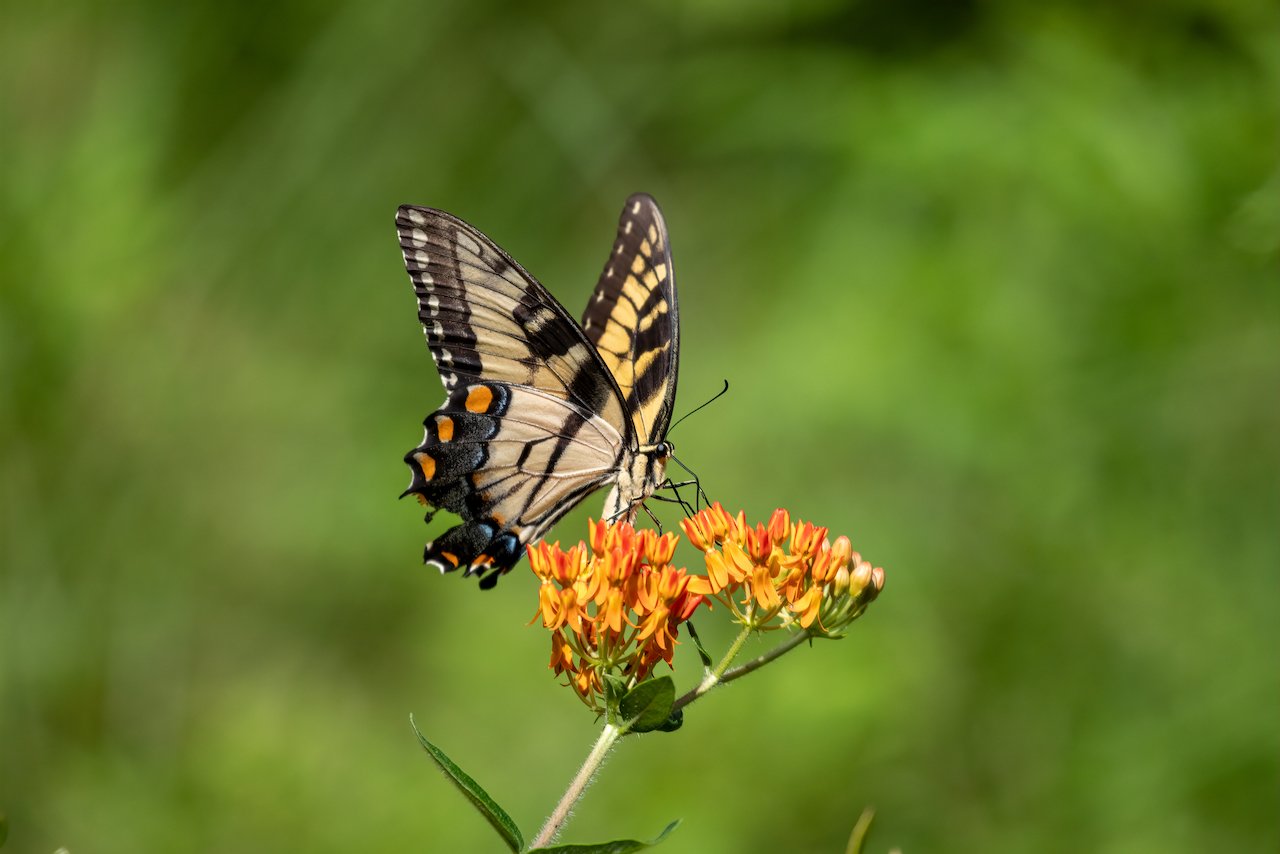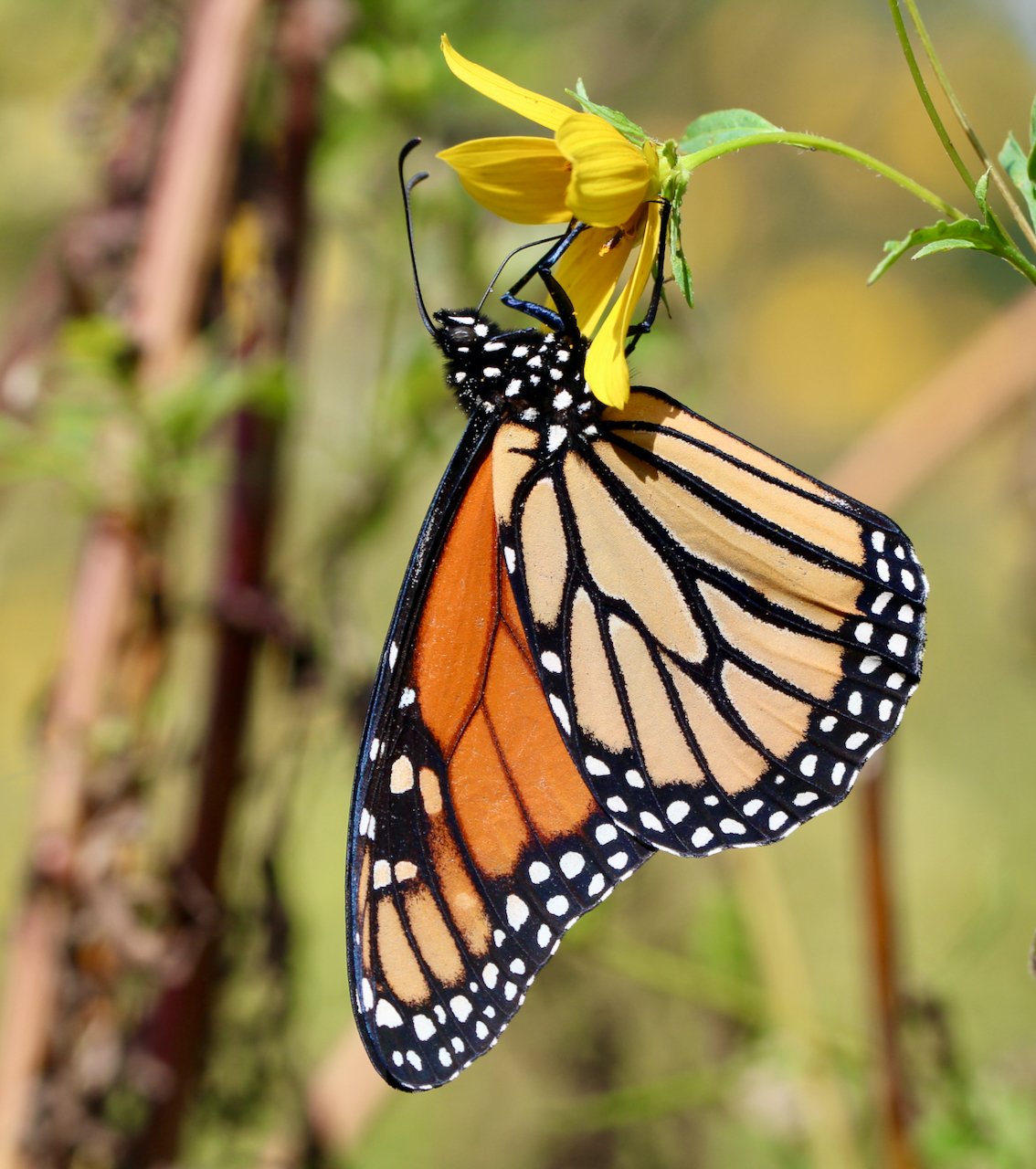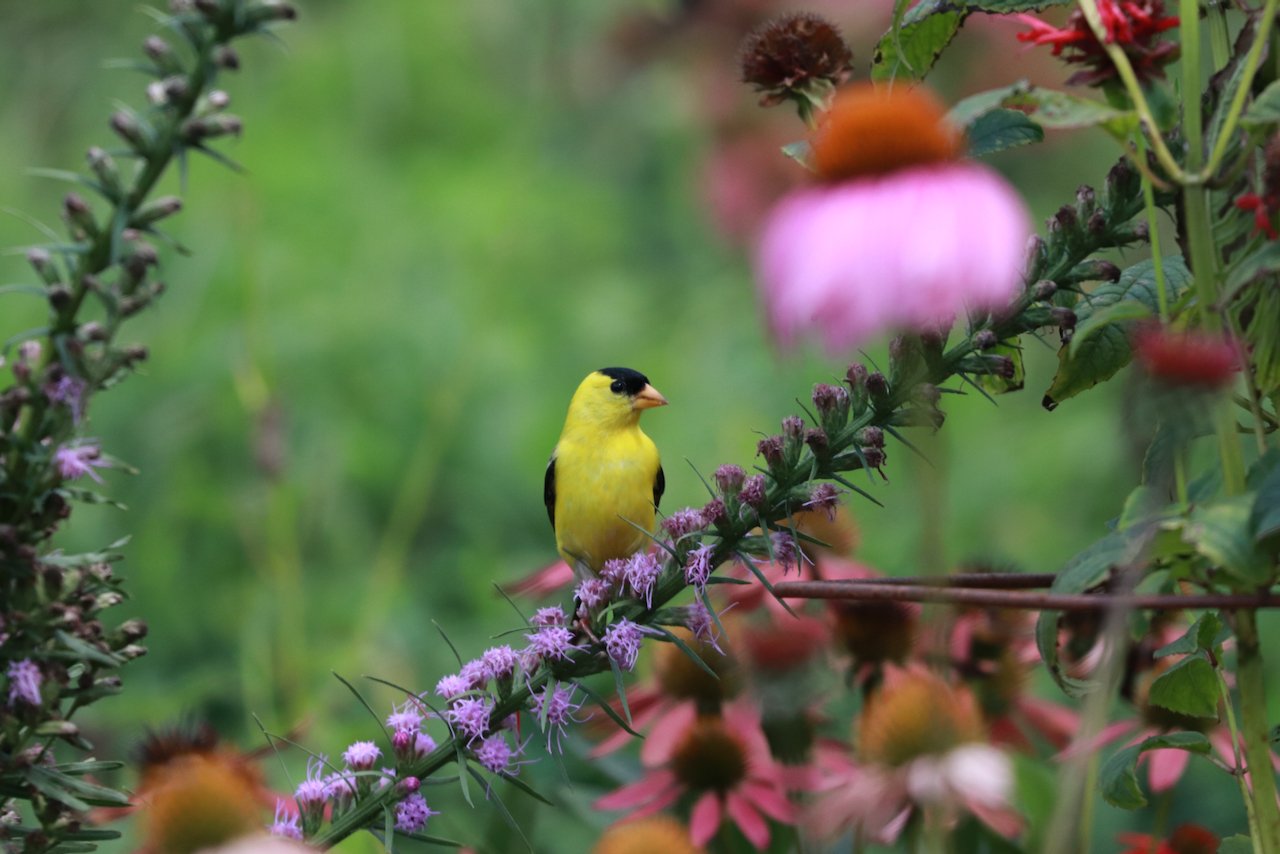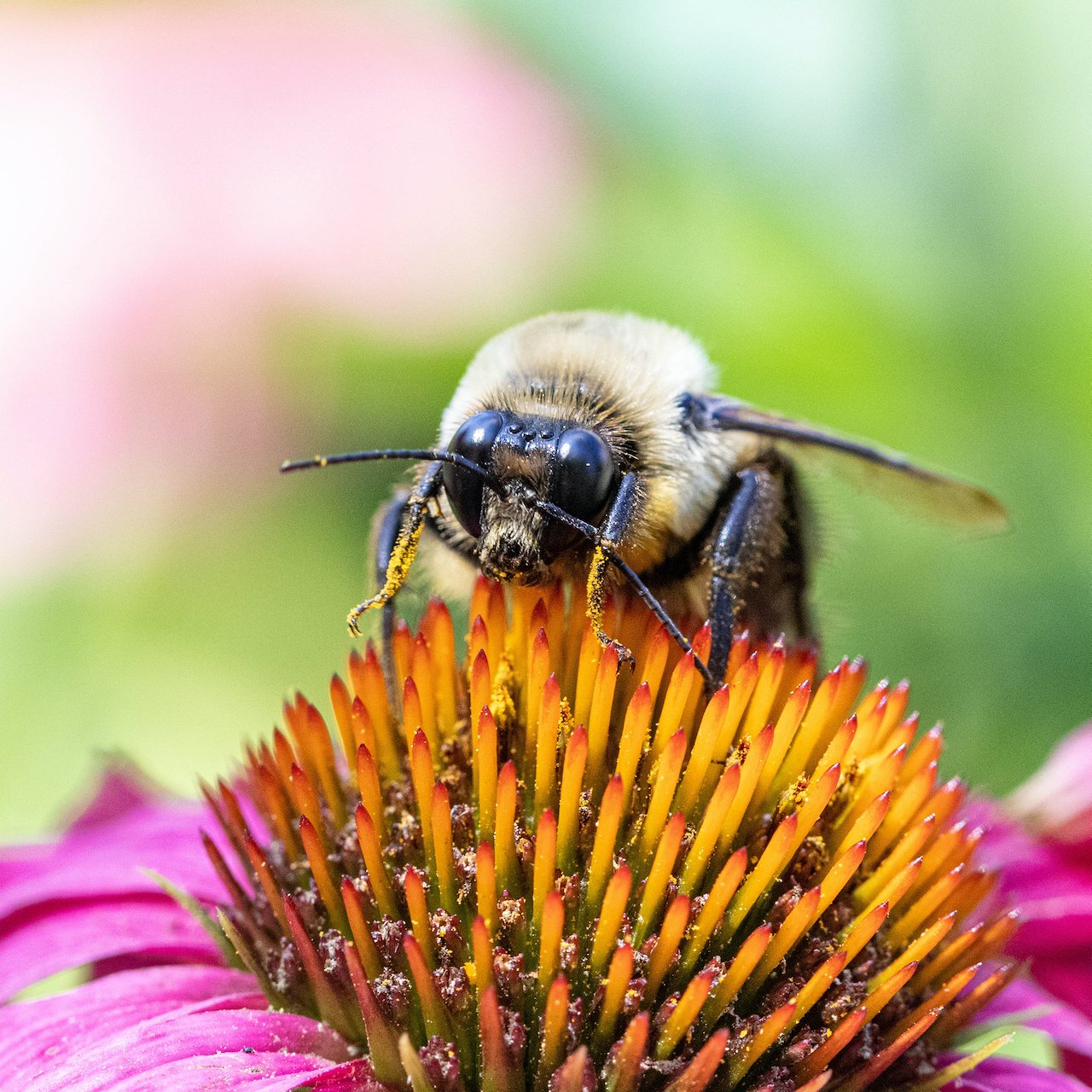Native Plants
American Goldfinch on Purple Coneflower (echinacea purpurea)
Why Native Plants?
Why not native plants? Native plants, plants that naturally occur in your area, are adapted to the local precipitation and soil conditions. They don’t need artificial fertilizers or pesticides. They don’t require a lot of fuss and upkeep therefore saving you time, money, water, and the environment.
But perhaps the most important reason to use native plants is to save our wildlife. Birds, bees, butterflies, and moths absolutely must have native plants to survive. Native plants also provide nourishing food in the form of seeds, nuts, and fruit that wild birds require. They also support hummingbirds and other pollinators by providing the nectar they need. Natives host many species of insects, especially moth and butterfly caterpillars, that young birds need to live. Did you know to raise one nest of chickadee babies, the parents must find up to 9,000 caterpillars to feed them? Native oak trees host caterpillars of over 550 butterfly and moth species! The non-native ginkgo tree hosts only 5.
Eastern Tiger Swallowtail on Stokes’ Aster
White-throated Sparrow enjoying American Beautyberry
Your yard, your neighborhood park, even the flower beds at the local shopping center matter to birds! No matter where you live or how much space you have gardening with native plants can help wildlife. With just a few careful plant choices, you can create a wild bird haven in your own space, one that provides the food and shelter that both resident and migratory birds need. No native plants, no birds, bees, moths, or butterflies.
Monarch caterpillar munching on milkweed, the only host plant for Monarch caterpillars!
Don’t Have a Big Yard?
Don’t have a big yard? Don’t worry! There are natives that do well in container gardens. Here is a link to Doug Tallamy’s Homegrown National Park website’s Container Gardening with Keystone Plants. Just click on our region and you will be taken to a list of great native keystone choices for containers.
Black-Eyed Susans do well in containers.
To get started, select species for your specific area. If you need help you can search Audubon’s website for native plants specific to your area here. You don’t have to tear out your whole yard, start small and continue to replace non-natives with native plants as time and money allow.
Below are links to local NC nurseries that carry native plants:
online nurseries: Garden for Wildlife and Joyful Butterfly
Ruby-throated Hummingbirds enjoy Bee balm.
Some native plants to consider for your yard:
Cardinal Flower Swamp Sunflower
Purple Coneflower Goldenrod
Milkweeds (not tropical) Serviceberry
Bee Balm Black-eyed Susans
Stokes Aster Aromatic Aster
American Beautyberry
Spicebush
Oak trees
A comprehensive list of Keystone Native Plants for our region can be found here
Greensboro was the first city in North Carolina to proclaim a Native Plants Week, October 18-24, 2021!
